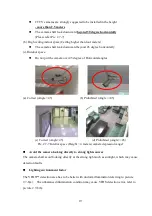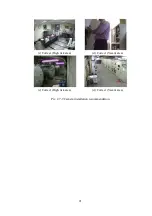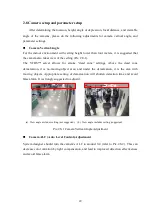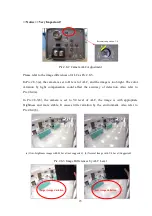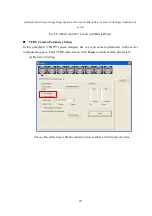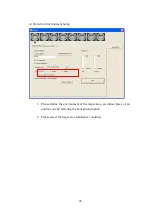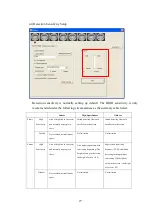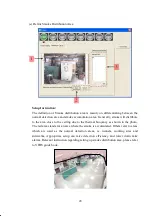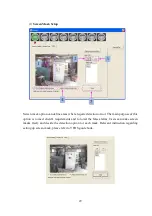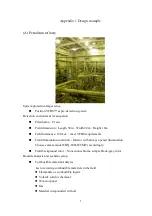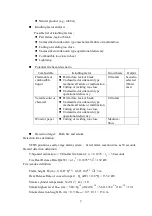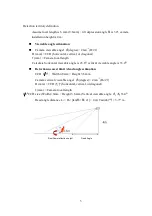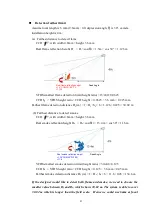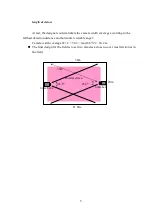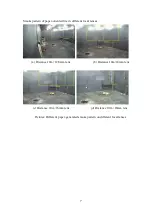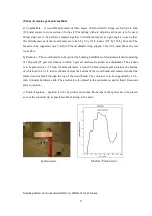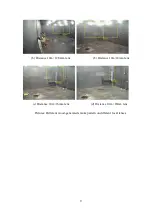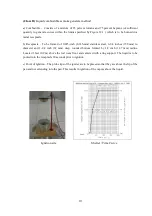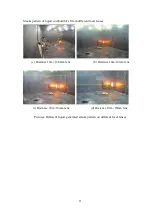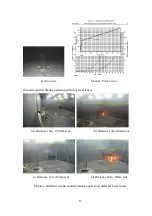
4
Detection farthest limit
Assume focal length is 6 mm (f=6mm)
,
tilt depression angle
θ
1
is 30°, camera
installation height is 4m
。
(a)
Farthest distance to detect flame
CCD
3
1
′′
, with width 4.8mm × height 3.6 mm
Real flame reflection height H
p
= H
f
×cos(
θ
1
) =
1.3m × cos 30° = 1.126 m
VFDS smallest flame detection limit (height ratio) =15/240=0.0625
CCD h
f
= VFDS height ratio × CCD height = 0.0625 × 3.6 mm = 0.225 mm
Farthest flame detection distance D
f
(m) = f
× H
f
/ h
f
= 6 × 1.126 / 0.225 = 30.02 m
(b) Farthest distance to detect smoke
CCD
3
1
′′
, with width 4.8mm × height 3.6 mm
Real smoke reflection height H
p
= H
s
×cos(
θ
1
) = 13.4 m × cos 30°= 11.6 m
VFDS smallest smoke detection limit (height ratio) =30/240=0.125
CCD h
f
= VFDS height ratio × CCD height = 0.125 × 3.6 mm = 0.45 mm
Farthest smoke detection distance D
s
(m) = f
× H
s
/ h
s
= 6 × 11.6 / 0.45 = 154.6 m
If the designer would like to detect both flame and smoke, we need to choose the
smaller value between D
f
and D
s
, which shows 30.02 m. The system is able to cover
30.02 m which is longer than the field scale. Hence we could use 6mm as focal
Real flame reflection height
=1.3*COS(30/180*PI)
=1.126
Dead Angle
Real smoke reflection height
=1.34*COS(30*PI/180)
=11.6
Dead Angle

